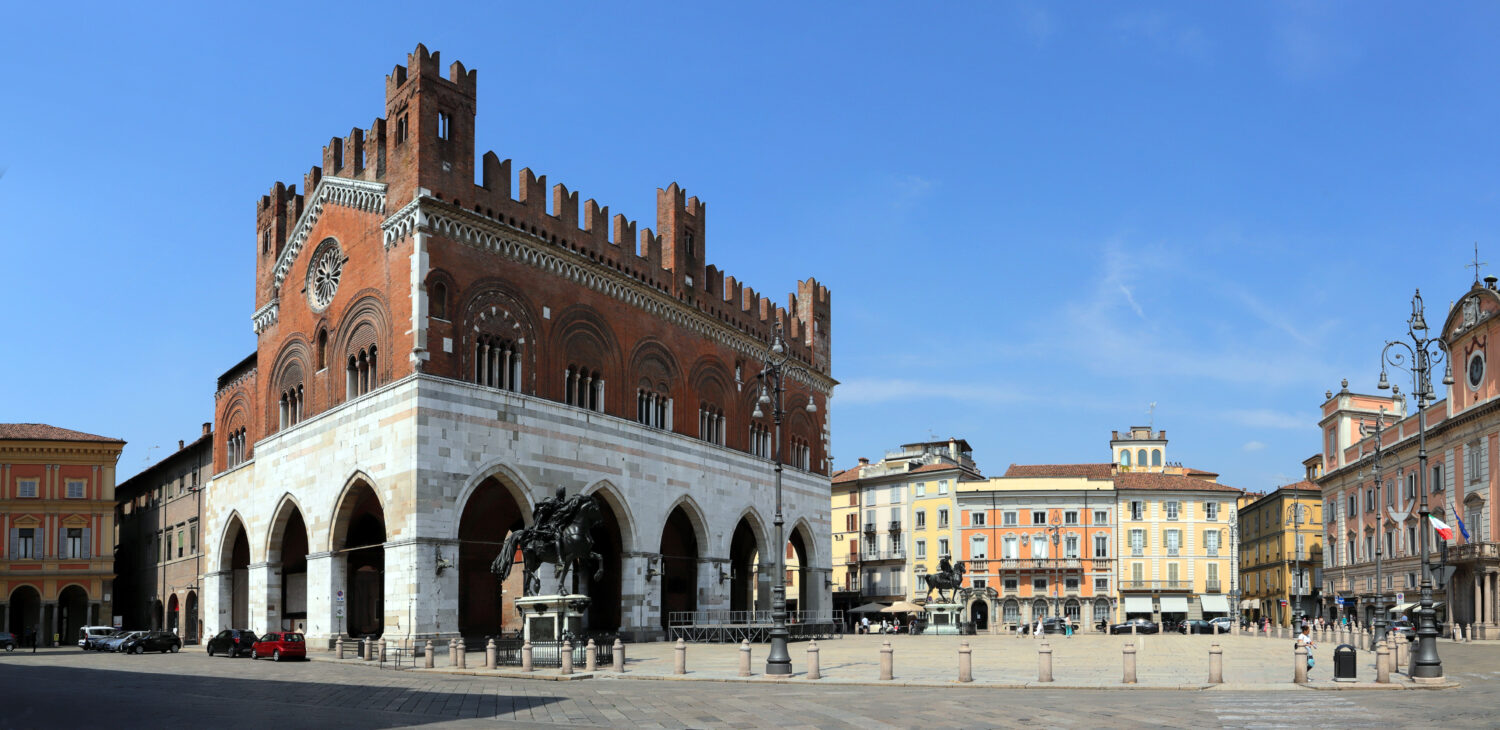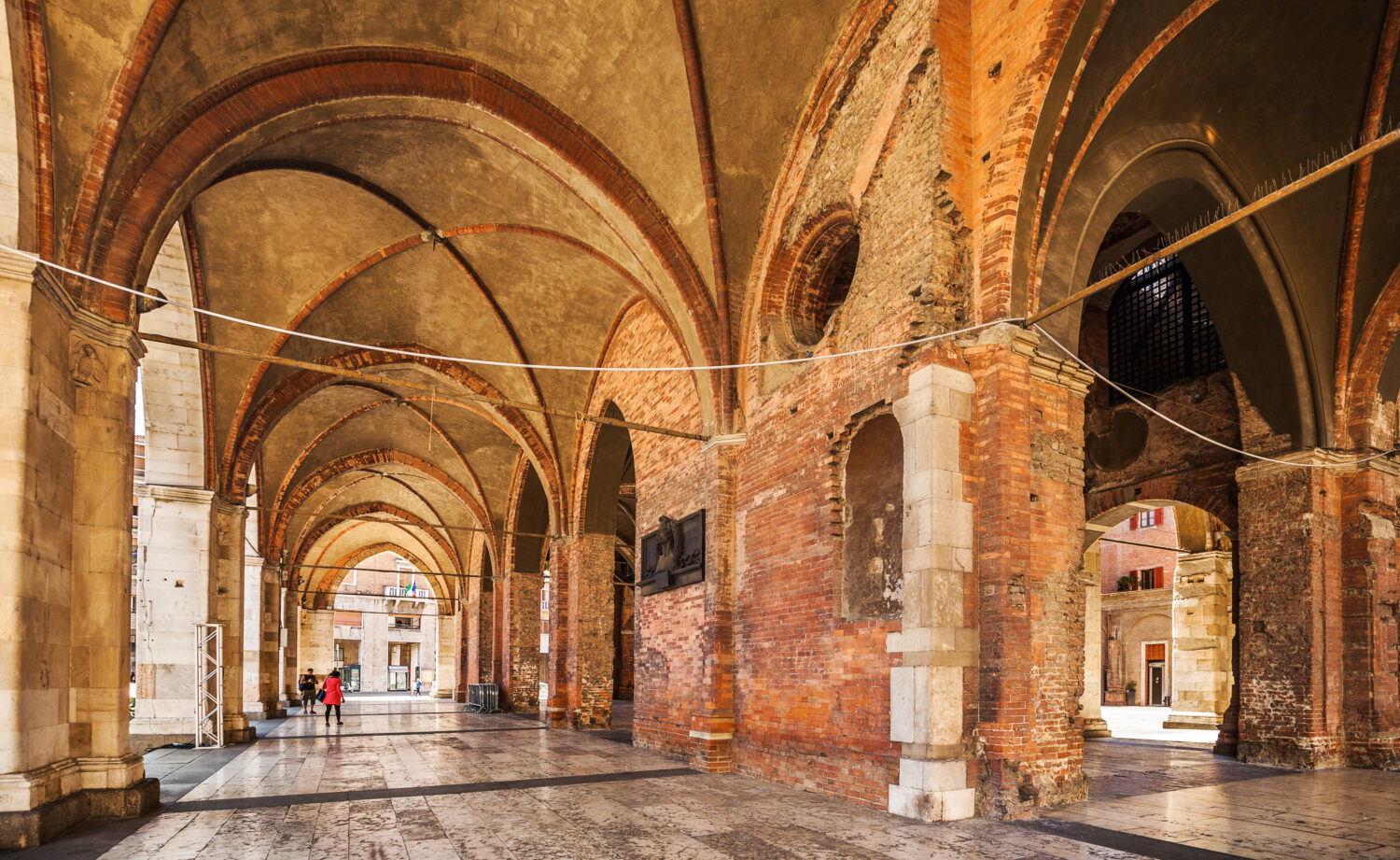Reading time: 6 minutes
Piacenza: an ancient city that Leonardo Da Vinci described as a “land of passage”. In fact, this city in Italy’s Emilia-Romagna region lies at the crossroads between Piedmont, Liguria, Emilia-Romagna, and Lombardy. With so many amazing places to visit in Italy, tourists often find it challenging to see everything. Placentia is Latin for “desire to please” and to this day, Piacenza certainly does just that. Hopefully, after reading this article, you’ll consider adding Piacenza to your bucket list of cities to visit in Italy. Andiamo!
From the Etruscans to the Habsburgs
It isn’t any surprise that Piacenza was a Roman military colony along with Cremona, prized for its position at the foot of the Apennines and on the banks of the Po and Trebbia Rivers. Even in pre-Roman times, it was inhabited by the Etruscans before the Celts conquered the Po Valley. After the fall of the Roman Empire, it was overtaken by the Lombards and later, by the Franks. Piacenza’s location along the Via Francigena en route to Rome greatly aided in its growth. Over the next several centuries, it would be ruled by the great houses of Visconti, Sforza, Farnese, and the Bourbons, as well as Napoleon. Finally, prior to the Unification of Italy, Piacenza had one of its most prosperous periods under the Habsburg family and Duchess Marie Louise.
Sights in the Historic Center
Probably the most famous and most photographed monument in Piacenza is its Piazza Cavalli with the large bronze statues of father and son, Alexander and Ranuccio Farnese, on horseback. The statues not only guard the piazza but also, the magnificent thirteenth-century Palazzo Gotico with its Ghibelline merlons. It once served as the Piacenza City Hall.

In the same piazza, you can also visit the Church of Saint Francis of Assisi. This Gothic-Romanesque, twelfth-century church contains beautiful, fifteenth-century frescoes inside.
Just a five-minute walk away is the ancient Basilica of Sant’Antonino which you should not skip! Its history likely dates back to the fourth century when a basilica was first erected. It is an interesting combination of architectural styles due to its many transformations over the past 1,500 years. If you are a history buff, you should know that it was in this very church that Emperor Frederick Barbarossa and his delegates signed the preliminary agreement of the Peace of Constance in 1183. There is also a museum containing documents dating back to the seventh century.

Piacenza’s Teatro Municipale is located in the immediate vicinity of the Basilica. The one-thousand-seat theater was built in 1804 in Neo-Classical design and resembles Milan’s La Scala.
Now make your way towards the Romanesque Duomo, or the Cathedral of Santa Maria Assunta and Santa Giustina built between the years 1122 and 1233.
The last stop on the absolute must-see tour of Piacenza is the 16th-century Palazzo Farnese which also holds the Civic Museums, the Art Gallery (Pinacoteca), the Carriage Museum, and the Risorgimento Museum.
For true art enthusiasts, Piacenza also has a wonderful modern art gallery, the Galleria d’Arte Moderna Ricci Oddi, which contains a permanent exhibition of Klimt.
What to Eat
It is impossible to talk about Piacenza without going into some detail about its amazing cuisine, considered one of the best in all of Italy. First courses include homemade stuffed egg pasta called anolini, or in the local dialect, i anvein. Another pasta dish likely dates back to Medieval times and is still served as a first course: i passerei e faso, or beans with tiny gnocchi pasta. Cured meats in Piacenza are some of the best in the country and include coppa piacentina DOP and pancetta piacentina DOP. World-famous Grana Padano DOP is a dry, aged cheese that requires between nine and twenty months to cure.
If you’re visiting in January, you will likely come across the scrumptious Turtlitt ad Sant’Antoni, a deep-fried, spicy-filled pastry puff traditionally prepared for the feast of Saint Anthony the Abbot on January 17th.
Finally, wines are made primarily from the native, white Ortrugo grape and include the DOC Ortrugo Colli Piacentini.

Tips for Your Visit
Piacenza is extremely easy to reach by both car and train as well as bus. It is only an hour by train from Milan and by car, it is directly off the A1 Autostrada. Just remember that the historic center is closed to traffic (ZTL, zona traffica limitata) so you will need to park your car either near the train station or at any of the other available lots just outside the city center.
The climate here is considered humid sub-tropical which means there is no dry season and high humidity is present year-round. For a more pleasant visit, the best months are early autumn and late spring.
Check out the nearby hamlets and castles just outside of Piacenza including Rivalta and Grazzano Visconti.

